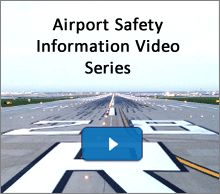What is Part 139? – Part 139 Airport Certification
14 CFR Part 139 requires FAA to issue airport operating certificates to airports that:
- Serve scheduled and unscheduled air carrier aircraft with more than 30 seats;
- Serve scheduled air carrier operations in aircraft with more than 9 seats but less than 31 seats; and
- The FAA Administrator requires to have a certificate.
This Part does not apply to airports at which air carrier passenger operations are conducted only because the airport has been designated as an alternate airport.
Airport Operating Certificates serve to ensure safety in air transportation. To obtain a certificate, an airport must agree to certain operational and safety standards and provide for such things as firefighting and rescue equipment. These requirements vary depending on the size of the airport and the type of flights available. The regulation, however, does allow FAA to issue certain exemptions to airports that serve few passengers yearly and for which some requirements might create a financial hardship.
Basic Phases of a Part 139 Inspection
To ensure that airports with Airport Operating Certificates are meeting the requirements of Part 139, nearly 35 FAA Airport Certification Safety Inspectors conduct certification inspections. These inspections typically occur yearly, but FAA can also make unannounced inspections. Certification inspections include the following steps:
- Pre-inspection review of office airport files and airport certification manual.
- In-briefing with airport management. Organize inspection time schedule, meet with different airport personnel.
- Administrative inspection of airport files, paperwork, etc. Also includes updating the Airport Master Record (FAA Form 5010) and review of the Airport Certification Manual/Specifications (ACM/ACS), Notices to Airmen (NOTAM), airfield self-inspection forms, etc.
- Movement area inspection. Check the approach slopes of each runway end; inspect movement areas to find out condition of pavement, markings, lighting, signs, abutting shoulders, and safety areas; watch ground vehicle operations; ensure the public is protected against inadvertent entry and jet or propeller blast; check for the presence of any wildlife; check the traffic and wind direction indicators.
- Aircraft rescue and fire fighting inspection. Conduct a timed-response drill; review aircraft rescue and firefighting personnel training records, including annual live-fire drill and documentation of basic emergency medical care training; check equipment and protective clothing for operation, condition, and availability.
- Fueling facilities inspection. Inspection of fuel farm and mobile fuelers; check airport files for documentation of their quarterly inspections of the fueling facility; review certification from each tenant fueling agent about completion of fire safety training.
- Night inspection. Evaluate runway/taxiway and apron lighting and signage, pavement marking, airport beacon, wind cone, lighting, and obstruction lighting for compliance with Part 139 and the ACM/ACS. A night inspection is conducted if air carrier operations are conducted or expected to be conducted at an airport at night or the airport has an instrument approach.
- Post inspection briefing with airport management. Discuss findings; issue Letter of Correction noting violations and/or discrepancies if any are found; agree on a reasonable date for correcting any violations, and give safety recommendations.
Compliance with Part 139
If FAA finds that an airport is not meeting its obligations, it often imposes an administrative action. It can also impose a financial penalty for each day the airport continues to violate a Part 139 requirement. In extreme cases, FAA might revoke the airport's certificate or limit the areas of an airport where air carriers can land or takeoff. See FAA Order 2150.3, FAA Compliance and Enforcement Program.
Contact Us
Popular Information
Popular Downloads
- Part 139 Airport Certification Status List
- Airports with 5G Buffers
- CertAlert 21-01, Aqueous Film Forming Foam (AFFF) Testing at Certificated Part 139 Airports (PDF)
- CertAlert 21-04, Updated Guidance for Airport Emergency Plans (AEP) under 14 CFR Part 139.325(b)(7) (PDF)
- CertAlert 21-05, Part 139 Extinguishing Agent Requirements
Diesel Exhaust Fluid and Fuel System Icing Inhibitor Video
Control of Fuel System Icing Inhibitor and Diesel Exhaust Fluid at Airports
FAA Disclaimer: The Energy Institute (EI) produced the video. The EI is a non-profit chartered professional membership body, based in the United Kingdom, that brings together professionals working globally across the energy sector. The body works to address global challenges and uses their skills and knowledge to suggest safety practices that also protect the environment. The FAA encourages users of the aviation system to clearly and safely label Diesel Exhaust Fluid and Fuel System Icing Inhibitor and keep them stored in separate areas, to avoid any accidental mixing of fluids.


